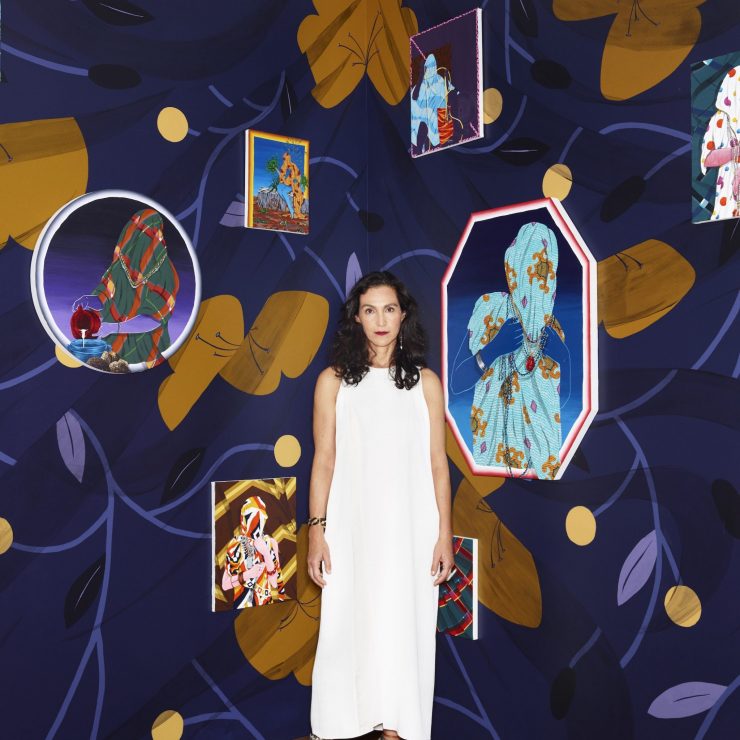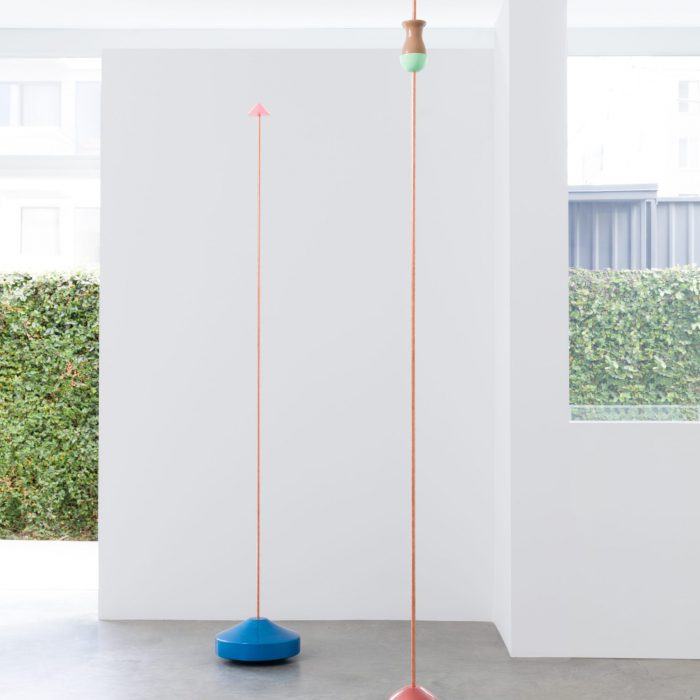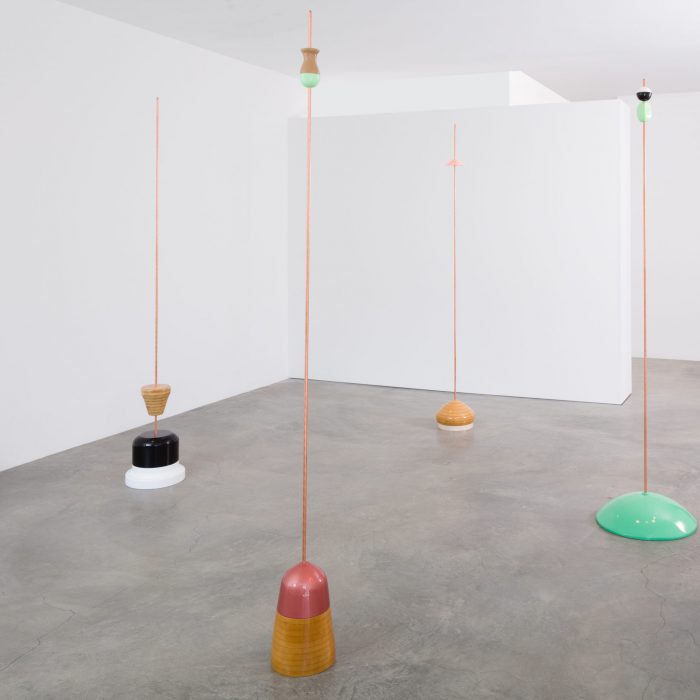
In Venice Beach, the western edge of Los Angeles’ sprawling artistic landscape, Shulamit Nazarian relishes the proximity of her eponymous gallery to the ocean. The office windows look directly out onto the beach and sea breezes sweep through the potted grass on the rooftop terrace that serves as both a serene meeting space and exhibition platform.
“It’s provided the kind of soothing environment that makes busy days pass a bit more peacefully,” says Nazarian, who purchased the modern beachside residence in 2011 and converted it into a place to show art. Formally trained as an architect, she pared back the industrial metal flourishes and erected additional white walls. But under the surface of these renovations, the space’s residential history still resounds. Above the conventionally designed gallery spaces of the first floor, a delicious aroma wafts from the oven of the second-floor kitchen, where the table is set for a daily lunch that hosts the gallery’s artists or any friends who might be passing through. The fourth floor features a lushly furnished bedroom to host curators and artists who are participating in current exhibitions overnight or the occasional intimate happening, as in a recent reading hosted by artist Carmen Argote.

The wonderfully familial atmosphere is fitting, given the gallery’s origins in Nazarian’s own home, a Midcentury Modern residence by L.A. icon A. Quincy Jones. In 2006, she hosted her first exhibition, a group show of Vietnamese artists whose work had never been seen in L.A. That was the start of her continuing mission to create a haven for international, underrepresented and often political artists, rather than pursue an architectural practice.
“Although I love designing buildings, the art world moves at a pace that can’t be emulated by the architecture world,” Nazarian explains. “Not having to focus so deeply on functionality at such a grand scale allows galleries to develop and execute plans at a greater speed.”

The singular theme recurring across the breadth of her exhibitions is a focus on the politics of identity. When the gallery officially opened in 2012, early shows addressed her heritage as a Jewish Iranian, featuring both Israeli and Iranian artists, often side by side. The scope of her exhibitions has since grown to include a broader exploration of the human experience. Last summer’s “Shapeshifters,” guest-curated by Tim Goossens, featured works by artists who use transformation as a means to explore topics such as identity and gender. Included in it was a catalogue of Guatemalan textiles by artist Martine Gutierrez and sculpture by Young Joon Kwak, founder of L.A.’s multiracial, LGBTQ beauty salon, art studio and performance platform, Mutant Salon.
“Art should provoke, move viewers, and create meaningful dialogue and change,” says Nazarian. Her frequent travels and invitations to guest curators continually introduce her to new artists, which preserves the plurality of voices within the gallery. The process involves “a lot of heavy lifting.”
“Shedding light on the artists whom we believe in demands constant attention, a willingness to adapt quickly and all of the resources at our disposal,” she says. “It is an ongoing challenge but also the most rewarding part of our work.”



